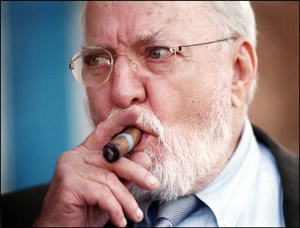This past week, for Trinity Sunday, I preached a sermon on the Trinity from John 8. During that sermon, I talked about how the common Trinity analogies are actually examples of anti-trinitarian heresies which have long-since been condemned by the Church. Afterward, I was asked by one of our brightest young theologians if, after all my error bashing, I could go on the affirmative to provide maybe just one helpful analogy or illustration of the Trinity that wasn't, in the end, heretical.
I told her that most theologians teach that no natural analogue exists, but that I'd think and study further.
Well, after more thought and study, the answer is: more of the same.
One of the greatest theologians among the early Church Fathers, Gregory Nazianzen [a 4th-century contemporary of Augustine, who - though he seemed to have been aware of their shortcomings - was a bit more loosey-goosey with Trinitarian analogies] said these words after evaluating several of the common Trinity analogies:
I have concluded that there is no solid ground upon which to stand my mind in these analogies. In order to consider the Object I am trying to better understand [God], I must completely accept one part of the analogy while rejecting the rest. In the end, it seems best to me to abandon the images and shadows [analogies], because they are deceitful and fall very short of the truth. Instead, clinging myself to the holier way of thinking, I rest upon few words and by the guidance of the Holy Ghost I make the light which I have received from Him my final friend and companion.
I journey through this world to persuade everyone else, to the best of my ability, to worship Father, Son, and Holy Ghost, the One Godhead and Power. To Him belongs all glory and honor and might for ever and ever. Amen.


